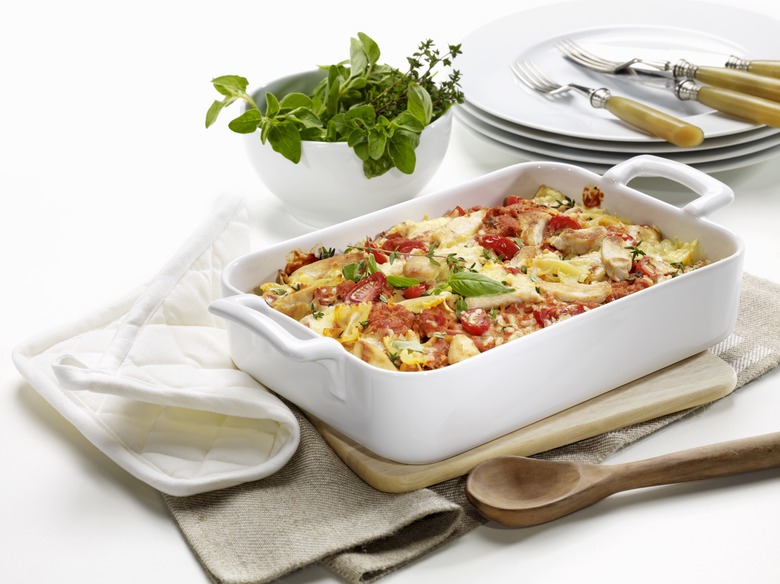How To Remove Burned On Food From Corningware
Many of Corningware's baking dishes are designed to handle high heats as well as cold refrigerator dishes, offering one-dish convenience for both cooking and storage. The downside is that cold food may end up sticking to the dish during the baking process, making for a difficult cleanup. In most cases, soaking the cooled bakeware in warm, soapy water makes it easier to remove burned on food.
The Simplicity of Soaking
The Simplicity of Soaking
Even if your Corningware is dishwasher-safe, that doesn't mean the dishwasher will remove all that caked on, baked on residue. Scoop out as much as you can from the cool pan, then soak the Corningware in hot, soapy water. After 20 minutes or longer, try scraping out the burned foods with your fingernail or with a nylon dish-scrubbing pad. Do not use a metal utensil to scrape out this residue, as it may scratch the Corningware.
A mild kitchen cleanser rubbed over the residue with a scrub pad may help remove any remaining residue. If the material still doesn't come off, soak the pan longer. This process can also be used for Corningware lids, including those made by Pyrex.
Read more: How to Clean Burnt Grease from Frying Pans
Using Baking Soda
Using Baking Soda
For stubborn, greasy buildup that doesn't come off even after a standard soak, squirt dish soap over the affected areas, then sprinkle baking soda liberally over the soap and elsewhere in the pan. Soak the Corningware in hot water for at least 15 minutes, then scrub it with a sponge or nylon dish-scrubbing pad, adding more baking soda for additional abrasive power. Rinse the dish thoroughly afterwards.
Preventing Baked-On Leftovers
Preventing Baked-On Leftovers
Heating up leftovers stored in the fridge is a common cause of foods burning and sticking to the inside of a Corningware dish. This happens when the food hasn't had time to warm up a bit when taken out of the refrigerator. Corningware recommends allowing refrigerated foods to sit at room temperature for 15 minutes or so before heating. Do this whether using a Corningware skillet or a casserole dish to help cut down on burnt food problems.
Prewarming a Corningware skillet or other stove top pan before adding foods can also help prevent foods from sticking to it. Warm the skillet on medium heat until it's warm enough to melt a pat of butter, then place the food in the skillet. Stove top cooking on medium rather than high heat can also help prevent foods from burning and sticking to the Corningware pan.
Conditioning New Corningware Skillet
Conditioning New Corningware Skillet
Conditioning cookware isn't just for cast iron skillets. Some Corningware pans also benefit from conditioning, as it helps prevent foods from sticking. Pour a small amount of cooking oil into the clean pan, then rub it around the pan with a paper towel. Heat the pan on the stove at low to medium heat until the oil bubbles a little. Once the pan cools, wipe the oil out with a paper towel.
This process is usually used for nonstick cookware; read your Corningware's care pamphlet to determine if your pan should be conditioned. Conditioning helps prevent foods from sticking as you cook, which reduces the potential for burnt-onto-the-pan messes.
Read more: How to Season Anodized Cookware
